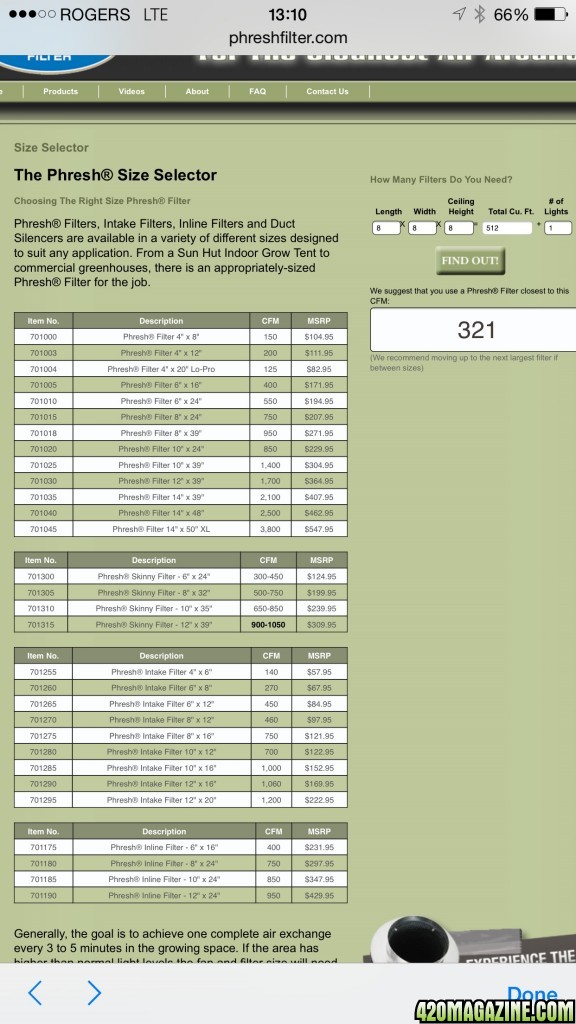Hi friends,
In the market for a carbon filter. I'm new to these pieces of equipment and I'm in need of some quality filters and their accessories.
So my specs:
My grow room is 410 cubic feet
I need both the inline/exhaust fan and the filter.
Would like to purchase the filter as a full unit.
Can anyone help me out with where I should get started?
You folks are amazing. And I won't take this question anywhere else.
Lots of love,
Pigeons420
In the market for a carbon filter. I'm new to these pieces of equipment and I'm in need of some quality filters and their accessories.
So my specs:
My grow room is 410 cubic feet
I need both the inline/exhaust fan and the filter.
Would like to purchase the filter as a full unit.
Can anyone help me out with where I should get started?
You folks are amazing. And I won't take this question anywhere else.
Lots of love,
Pigeons420




